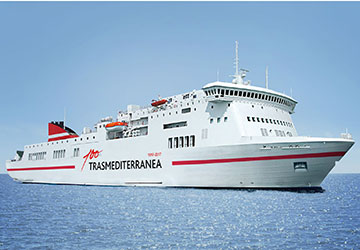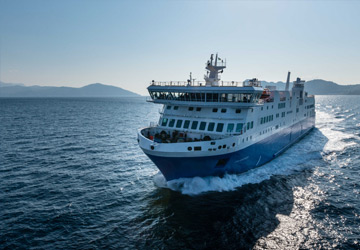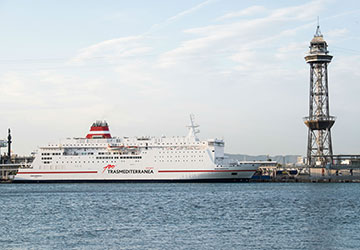
-
Recent Searches
Recent Searches
- Travel Alerts
- My Account
- Customer Service
-
United Kingdom
Las Palmas to Santa Cruz de La Palma Ferry
The Las Palmas Santa Cruz de La Palma ferry route connects Gran Canaria with La Palma. Currently there is just the 1 ferry company operating this ferry service, Trasmediterranea. The crossing operates up to 1 times each week with sailing durations from around 19 hours.
Las Palmas Santa Cruz de La Palma sailing durations and frequency may vary from season to season so we’d advise doing a live check to get the most up to date information.
Average Las Palmas Santa Cruz de La Palma Prices
Prices shown represent the average one way price paid by our customers. The most common booking on the Las Palmas Santa Cruz de La Palma route is a car and 2 passengers.
Las Palmas Guide
Las Palmas, officially named Las Palmas de Gran Canaria, is a city and capital on the Spanish island of Gran Canaria in the Canary islands. The city is roughly 150 km from the African coast and is located in the north east part of Gran Canaria. The city's climate, warm, dry summers and winters that aren't too cold, make it a popular destination for tourists.
The city was founded in 1478 by Juan Rejon and has many things to see and do including a selection of theatre, cinema, opera, music concerts, museums and galleries to enjoy. Two of the most popular cultural events held in the city are the Canary Island Music Festival and the International Film Festival. The most important historical buildings in the city can be found in the Vegueta part of the city where some of the buildings have been standing for 500 years. These include the Chapel of San Antonio Abad, the Plaza de Santa Ana which is bordered by the Casas Consistoriales, the Casa Regental, the Obispado and Santa Ana Cathedral.
Las Palmas is the main ferry port on the island. As the island is in the middle of the archipelago, Las Palmas ferry port provides connections to several islands (Fuerteventura, Lanzarote, La Palma, Tenerife) and also the south of Spain (Huelva and Cadiz).
Santa Cruz de La Palma Guide
Santa Cruz de La Palma is located on the Canary Island of La Palma is a beautiful colonial style Spanish city whose historic quarter, which has been declared a Historic-Artistic Site, has a number of palaces, colonial style buildings and houses that contain elements of typical canary Islands architecture. The city can trace its history back to the latter part of the 15th century when Alonso Fernandez de Lugo captured the island and made it the possession of the Crown of Castile, and from then on it began to gain economic power. Popular attractions in the city include a number of churches and the Shrine of Virgen de las Nieves and is where a centuries old tradition takes place: the descent of the island's patron saint. The famous Calle Real street has been declared a Property of Cultural Interest and a Historic-Artistic Site and is the city's main street. It is mainly cobbled and is the location of the main shops, squares, houses and interesting buildings.
From the city's port, ferry services operate to Cadiz on the Spanish mainland, Tenerife, Gran Canaria and Lanzarote.





